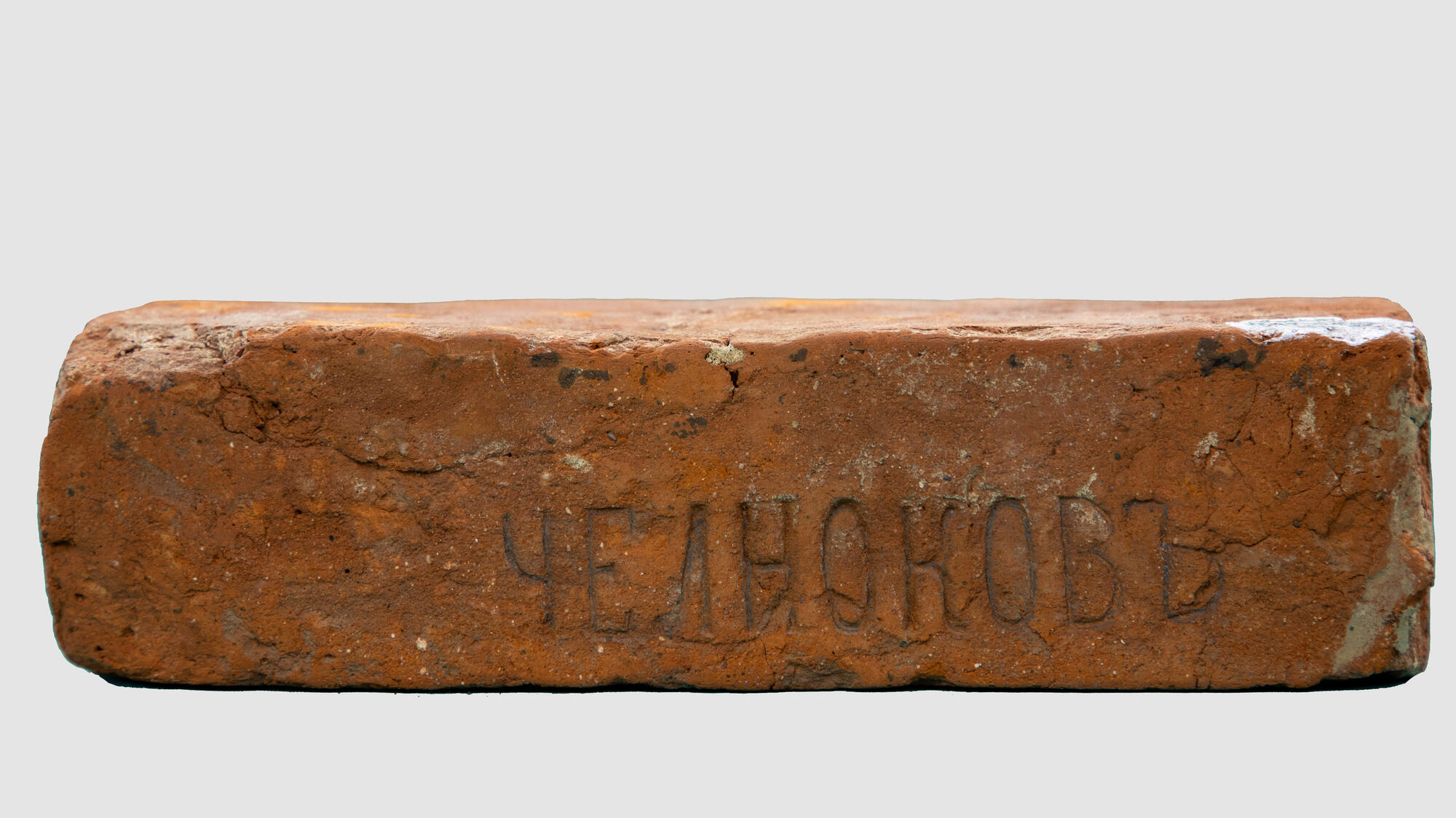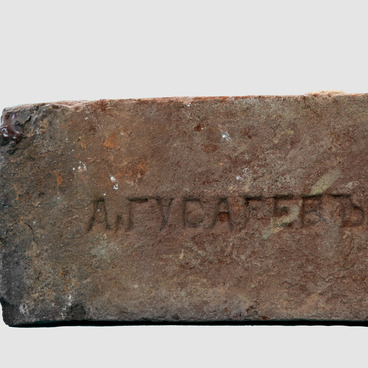The Chelnokovs were an old family of merchants. The Chelnokov brothers, Second-Guild Moscow merchants, honorary citizens, lived in Moscow around the 1850s.
Vasily Chelnokov, who established his own brick factory in Sharapovo, near Bolshie Mytishchi, became a major manufacturer in 1869. At first, the merchant rented land from the peasants' union and then purchased it. The fact of purchasing was recorded in the land register of the Moscow Notary Archive. Chelnokov’s factory was standing on a field with spots of marshland. The soil on the lot he bought was rich in clay: It was of uneven color, reddish and dark brown, very greasy, too hard for the crushing machine, and contained a lot of iron and organics. The factory used it in production of bricks of all types: salmon, red, and second-class bricks.
Initially, Chelnokov had three Russian stoves for baking bricks. Workers used long iron tongs to take bricks out of them. By 1880, the factory purchased the advanced Hoffman circular kiln.
Chelnokov financed the construction of the railroad from Mytishchi station with his own funds. Steadily, the factory was growing. By 1880, new buildings for workers were finished, including seven residential houses (dormitories, kitchens, canteens), a sauna, and a hospital. The number of brick molding barns reached 50. The bricks were molded using a manual-machine method in lead molds on 140 tables.
There were 260 people working at the factory: bricklayers, dryers, clay diggers, boilers, and kiln workers. Kilns worked all year long, clay was extracted from mid-May to November, and mudbricks were manufactured from May to September. A work day lasted from 11 hours to a minimum of nine hours in winter.
In 1879, Vasily Fyodorovich Chelnokov passed away. His five children (four sons and a daughter) inherited his brick factory. Young factory owned introduced the new brand “Chelnokov” to maintain the tradition of their father’s brand ‘V. Chelnokov.’ Both brand marks can be found on the brickwork of late 19th–early 20th century’s buildings.
Several buildings build from the bricks produced at Chelnokov’s factory continue to stand in Mytishchi. These are the pharmacy on Kolontsova Street, the water tower near the railroad, the former school in Bolshie Mytishchi, and the side altar of St. Nicholas the Wonder-Worker at the Vladimir Church. Chelnokov’s bricks were used for construction of the zemstvo (provincial) hospital, the railway station, the pumping station of Mytishchi (Vodokanal), the Viskoza factory, industrial and residential buildings of the Chernyshovs' factory (Proletarskaya Pobeda).
Vasily Chelnokov, who established his own brick factory in Sharapovo, near Bolshie Mytishchi, became a major manufacturer in 1869. At first, the merchant rented land from the peasants' union and then purchased it. The fact of purchasing was recorded in the land register of the Moscow Notary Archive. Chelnokov’s factory was standing on a field with spots of marshland. The soil on the lot he bought was rich in clay: It was of uneven color, reddish and dark brown, very greasy, too hard for the crushing machine, and contained a lot of iron and organics. The factory used it in production of bricks of all types: salmon, red, and second-class bricks.
Initially, Chelnokov had three Russian stoves for baking bricks. Workers used long iron tongs to take bricks out of them. By 1880, the factory purchased the advanced Hoffman circular kiln.
Chelnokov financed the construction of the railroad from Mytishchi station with his own funds. Steadily, the factory was growing. By 1880, new buildings for workers were finished, including seven residential houses (dormitories, kitchens, canteens), a sauna, and a hospital. The number of brick molding barns reached 50. The bricks were molded using a manual-machine method in lead molds on 140 tables.
There were 260 people working at the factory: bricklayers, dryers, clay diggers, boilers, and kiln workers. Kilns worked all year long, clay was extracted from mid-May to November, and mudbricks were manufactured from May to September. A work day lasted from 11 hours to a minimum of nine hours in winter.
In 1879, Vasily Fyodorovich Chelnokov passed away. His five children (four sons and a daughter) inherited his brick factory. Young factory owned introduced the new brand “Chelnokov” to maintain the tradition of their father’s brand ‘V. Chelnokov.’ Both brand marks can be found on the brickwork of late 19th–early 20th century’s buildings.
Several buildings build from the bricks produced at Chelnokov’s factory continue to stand in Mytishchi. These are the pharmacy on Kolontsova Street, the water tower near the railroad, the former school in Bolshie Mytishchi, and the side altar of St. Nicholas the Wonder-Worker at the Vladimir Church. Chelnokov’s bricks were used for construction of the zemstvo (provincial) hospital, the railway station, the pumping station of Mytishchi (Vodokanal), the Viskoza factory, industrial and residential buildings of the Chernyshovs' factory (Proletarskaya Pobeda).



